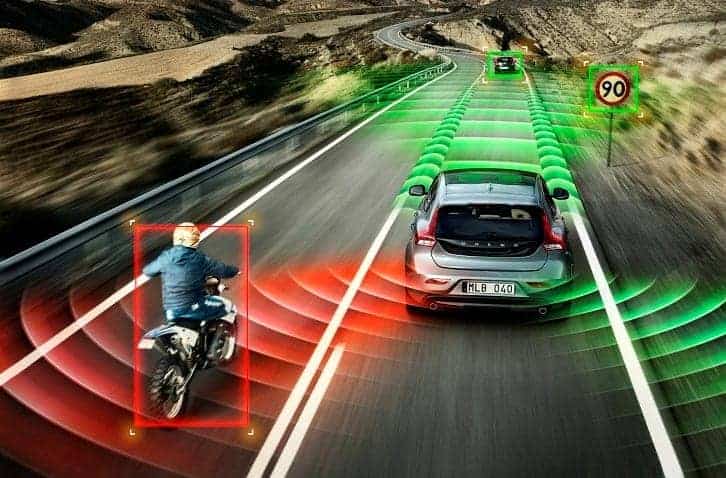While Volvo isn’t the first one to announce it — Mercedes-Benz and Toyota are also developing something similar — the vehicle-to-vehicle communication system Volvo announced they’re working on is exciting stuff. After all, it’s Volvo – arguably the leading brand when it comes to advanced safety technology. Now that they’ve embarked on developing their own form of this technology, it might speed up the process for fully-autonomous vehicles. Not only that, it’s another one of many giant bounds Volvo has recently taken to meet their self-imposed safety deadline of 2020: ensuring that not a single Volvo owner will perish as the result of a collision.
Let’s take a closer look at this exciting technology, and how it heralds the dawn of a new age in the vehicle market – an age of self-driving cars.
About the Technology
Volvo teamed up with Ericsson to help develop the new communication technology. Sadly, this technology will only be on the European 90 series models, such as the S90, V90, and XC90 SUV. That means when it launches at the end of 2016, it will only be available to drivers in Europe. American drivers will have to wait a little while for this technology, which makes sense given that Volvo is a foreign automaker and wants to launch its new and exciting technology on familiar turf.
The CEO of Volvo, Hakan Samuelsson, said their communications technology will be routed through a cloud platform. Essentially, it’s like a juiced-up version of Google’s OneDrive technology, where you can store information on the web, and send or download it to different devices. Much like sending a file or folder on OneDrive, the technology will send and receive data via the cloud platform to compatible vehicles and provide information like traffic updates, environmental hazards, or road conditions.
Therefore, if one vehicle that’s twenty miles ahead of your vehicle notices a type of hazard or bad weather condition, it will automatically upload that information to the platform through sensors. In theory, this will allow the other vehicles to that are compatible (and connected) to the cloud platform to receive a warning as well.
It’s cool stuff, and it’s possible that Volvo can use it to speed up the arrival of fully-autonomous Volvo vehicles.
Heralding the Arrival of Autonomous Vehicles?
Semi-autonomous vehicles rely on safety technology like radar sensors, which can detect and preemptively eliminate things like collisions. What these vehicles are lacking to go fully autonomous — apart from consumer trust in that type of technology, and how expensive they will likely be — is a way for these vehicles to communicate with each other. If all vehicles were able to access the same cloud platform, it would provide all located in close proximity to each other with information regarding hazards ahead. Furthermore, this technology is able to detect issues that radar sensors can’t.
If their first attempt at this technology is a success, don’t be surprised to see an earlier-than-predicted arrival of a self-driving car hitting the market. Since this is also just one of many vehicle communications projects being developed, it’s possible they could all eventually work together and link to the same platform. Helping make the overall dream of a self-driving vehicle market for all brands, a reality.




